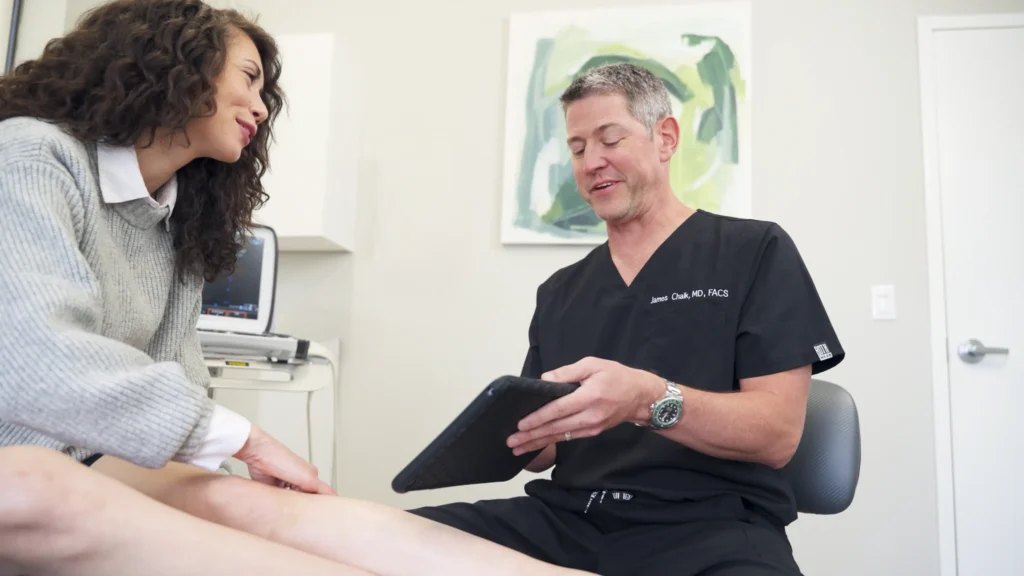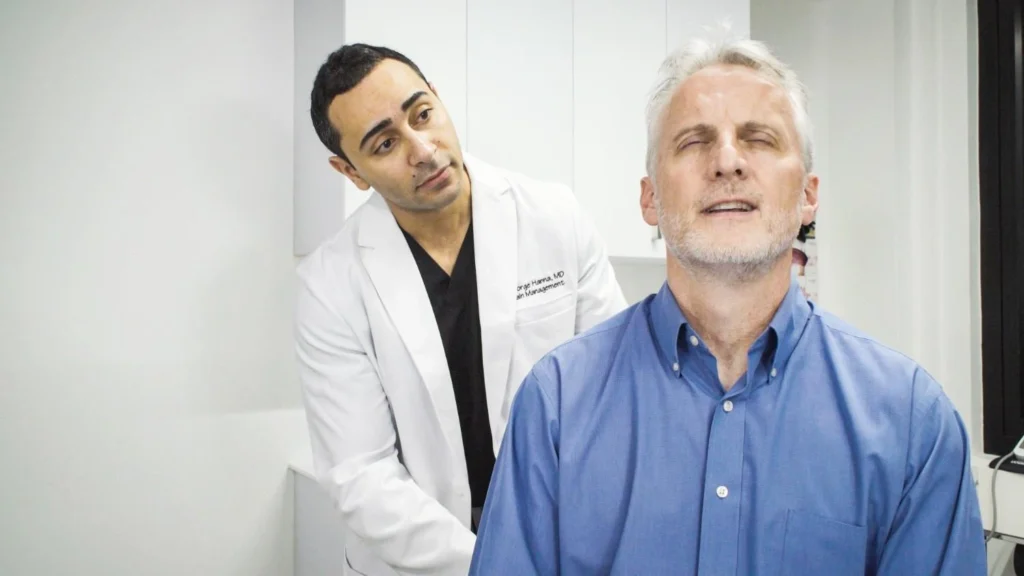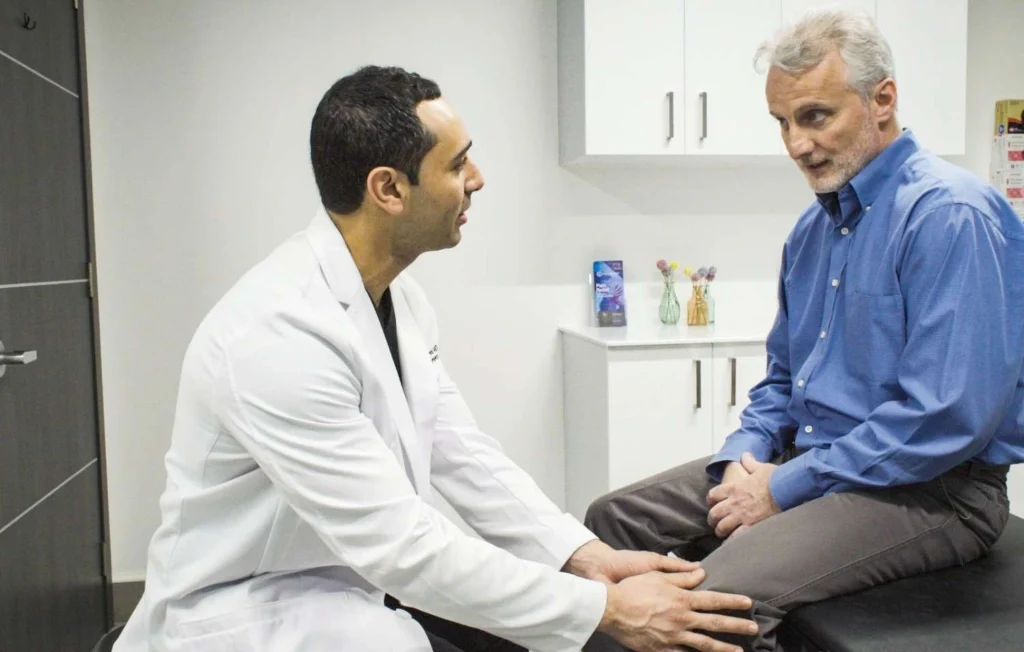What Causes Spider Veins on Legs? How Can They Be Treated?
You stand before a mirror and notice small, web-like veins scattered across your legs. They weren’t always there, but now, they seem to be multiplying. These thin, visible veins, commonly known as spider veins, are often more than just a cosmetic nuisance. If you’re like many individuals dealing with spider veins, you might wonder, “Why are these spider veins appearing, and what can be done to remove them?”
At VIP Medical Group, we understand the concerns and frustrations that come with spider veins. Our board-certified vein specialists are dedicated to helping you understand what causes spider veins on legs and offering personalized, minimally invasive spider vein removal options. In this article, we’ll explore what causes spider veins on legs, the most effective treatments available, and how VIP Medical Group can help you achieve healthier, vein-free legs.
Spider Veins: What Are They?
Spider veins are tiny, damaged veins that appear close to the skin’s surface, often forming a web-like pattern. They are commonly found on the legs and face and can be blue, red, or purple in color. While spider veins themselves are usually harmless, they can indicate an underlying condition, such as chronic venous insufficiency, where your veins struggle to efficiently pump blood back to the heart.
What Causes Spider Veins on Legs?
Now that you know what spider veins are, let’s explore the key factors that contribute to their development:
- Genetics: One of the most significant factors that lead to spider veins is genetics. If your parents or grandparents have spider veins, chances are you might develop them too. Weak vein walls and faulty vein valves can be inherited, making it more difficult for blood to flow upward through the veins in your legs.
- Hormonal Changes: Hormonal fluctuations, especially in women, can contribute to the development of spider veins. Pregnancy and menopause are associated with increased hormone levels that can weaken vein walls. During pregnancy, for example, your blood volume increases to support your growing baby, putting extra pressure on your veins.
- Prolonged Standing or Sitting: Your lifestyle and occupation can also play a role in the formation of spider veins. Jobs that require long periods of standing or sitting—such as nursing, teaching, or working at a desk—can affect circulation. When you stay in one position for too long, it becomes harder for blood to move efficiently through your veins, leading to the pooling of blood and the development of spider veins.
- Aging: As you age, your veins lose elasticity, which can weaken the valves within them. When vein valves no longer function correctly, blood can flow backward and pool in the veins, causing spider veins to appear.
- Obesity: Excess weight adds pressure to your veins, especially in your legs, making it more difficult for blood to circulate properly. This additional strain can lead to the formation of both spider veins and varicose veins.
- Sun Exposure: While spider veins are most commonly found on the legs, they can also appear on the face, especially after prolonged sun exposure. UV rays can cause damage to the skin and the tiny blood vessels underneath, leading to the appearance of spider veins.

How Can Spider Veins Be Treated?
Thankfully, if spider veins have started to impact your confidence, there are several effective spider vein treatment options available. These are minimally invasive and tailored to your specific needs. Let’s explore some of the most popular vein treatments:
- Sclerotherapy: Sclerotherapy is one of the most common and effective treatments for spider vein removal. During this procedure, your vein specialist injects a solution into the affected veins, causing them to collapse and eventually fade from view. The procedure is quick, typically lasting 15 to 30 minutes, and requires no downtime. Sclerotherapy is ideal for small to medium-sized spider veins and can be covered by insurance if deemed medically necessary due to an underlying condition.
- Endovenous Laser Ablation (EVLA): Endovenous laser ablation (EVLA) is a minimally invasive procedure that uses laser energy to close off damaged veins. A small catheter is inserted into the vein, and the laser energy seals the vein shut, allowing blood to be rerouted to healthier veins. This treatment is particularly effective for larger veins and can also help reduce the appearance of spider veins.
- Radiofrequency Ablation (RFA): Similar to EVLA, RFA uses heat generated from radiofrequency energy to close damaged veins. This technique is also minimally invasive, with a high success rate, and can be performed in a vein clinic under local anesthesia.
- VenaSeal: VenaSeal is a state-of-the-art treatment that involves sealing the damaged vein with a medical adhesive. Once sealed, blood is naturally rerouted to healthier veins. VenaSeal offers quick recovery times and minimal discomfort.
- Ambulatory Phlebectomy: Ambulatory phlebectomy is a procedure for removing larger veins through small incisions. While this method is more commonly used for varicose veins, it can also help improve the appearance of surrounding spider veins.
Does Insurance Cover Spider Vein Removal?
While spider veins are often seen as a cosmetic issue, the root cause of spider veins, such as venous insufficiency, is typically considered a medical condition. At VIP Medical Group, we perform duplex ultrasound to determine if venous insufficiency is present, and if so, many of the spider vein treatments are covered by insurance. This includes sclerotherapy if it’s part of a larger, more comprehensive spider vein treatment plan. Even if you’re primarily concerned with the cosmetic aspect, treating the underlying cause is essential for long-term results.
We offer free insurance verification before your first appointment to help you understand your coverage options and ensure you receive the best possible care. We provide a complete overview of your spider vein removal cost before your treatment.
How VIP Medical Group Can Help
At VIP Medical Group, our team of board-certified vein specialists is here to provide personalized care. We are led by Harvard-trained, Ivy League-educated vein specialists who specialize in the most advanced, minimally invasive treatments for spider veins and varicose veins. Each spider vein treatment plan is tailored to your individual needs, and we use state-of-the-art diagnostic tools to ensure accurate diagnoses and optimal outcomes.
With vein clinics across New York, New Jersey, Long Island, California, and Maryland, finding a convenient location for your vein treatment has never been easier. Visit your vein clinics and learn how our specialists can help you regain confidence in your legs.





